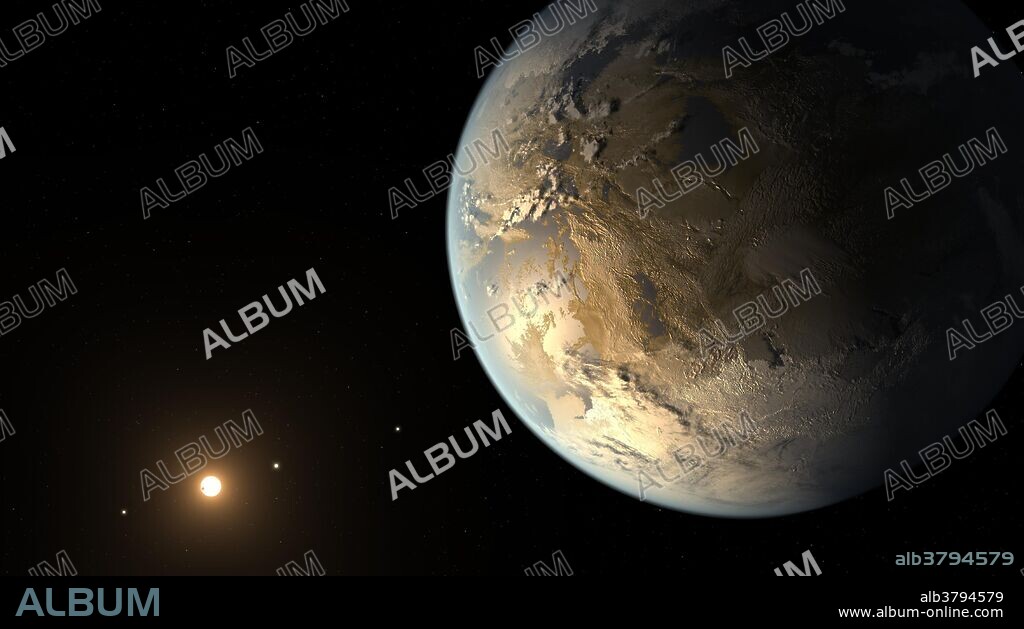alb3794579
Exoplanet Kepler-186f

|
Add to another lightbox |
|
Add to another lightbox |



Buy this image.
Select the use:

Title:
Exoplanet Kepler-186f
Caption:
Artist's concept depicts Kepler-186f, the first validated Earth-size planet to orbit a distant star in the habitable zone - a range of distance from a star where liquid water might pool on the planet's surface. The discovery of Kepler-186f confirms that Earth-size planets exist in the habitable zones of other stars and signals a significant step closer to finding a world similar to Earth. The size of Kepler-186f is known to be less than ten percent larger than Earth, but its mass, composition and density are not known. Previous research suggests that a planet the size of Kepler-186f is likely to be rocky. Prior to this discovery, the "record holder" for the most "Earth-like" planet went to Kepler-62f, which is 40 percent larger than the size of Earth and orbits in its star's habitable zone. Kepler-186f orbits its star once every 130 days and receives one-third the energy that Earth does from the sun, placing it near the outer edge of the habitable zone.
Credit:
Album / Science Source / NASA/Ames/SETI Institute/JPL-Caltech
Releases:
Model: No - Property: No
Rights questions?
Rights questions?
Image size:
4534 x 2550 px | 33.1 MB
Print size:
38.4 x 21.6 cm | 15.1 x 8.5 in (300 dpi)
Keywords:
2010S • 2014 • 21ST CENTURY • 21ST • 21TH CENTURY • ART • ARTWORK • ASTRONOMIA • ASTRONOMICAL OBJECT • ASTRONOMICAL • ASTRONOMY • CELESTIAL BODY • CELESTIAL OBJECT • CHZ • CIRCUMSTELLAR HABITABLE ZONE • DEEP SKY • DEEP SPACE • EARTH-LIKE PLANET • EARTH-LIKE • EARTH-SIZE PLANET • EARTH-SIZE • EXOPLANET KEPLER-186F • EXOPLANET • EXTRASOLAR PLANET • HABITABLE ZONE • HABITABLE • HEAVENLY BODY • ILLUSTRATION • ILLUSTRATIONS • INHABITABLE • KEPLER-186F • OUTERSPACE • PLANET • PLANETARY HABITABILITY • PLANETS • SCIENCE • SPACE (COSMOS) • SPACE • SPATIAL • TERRAN • TERRESTRIAL
 Pinterest
Pinterest Twitter
Twitter Facebook
Facebook Copy link
Copy link Email
Email
